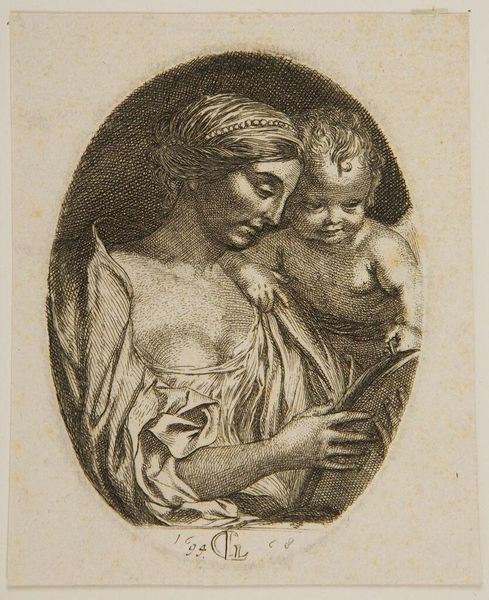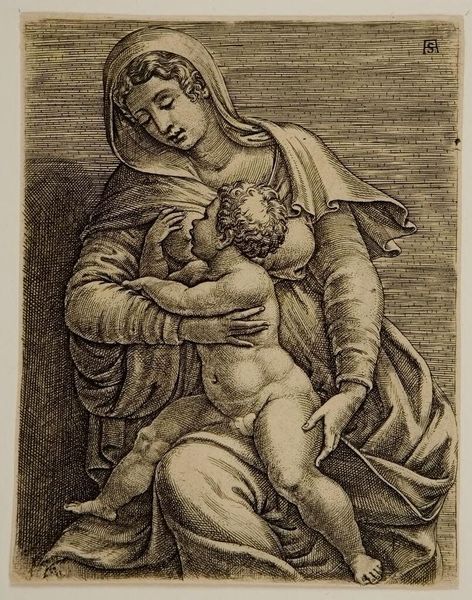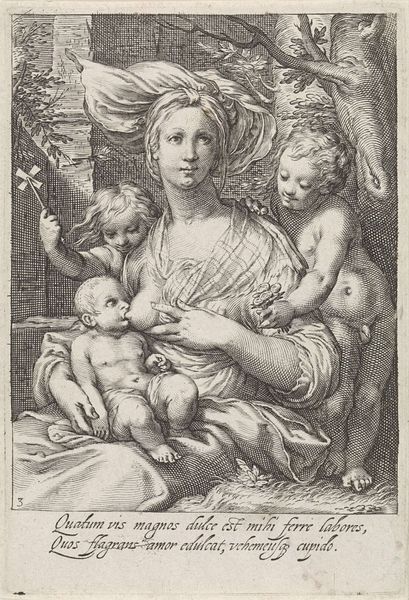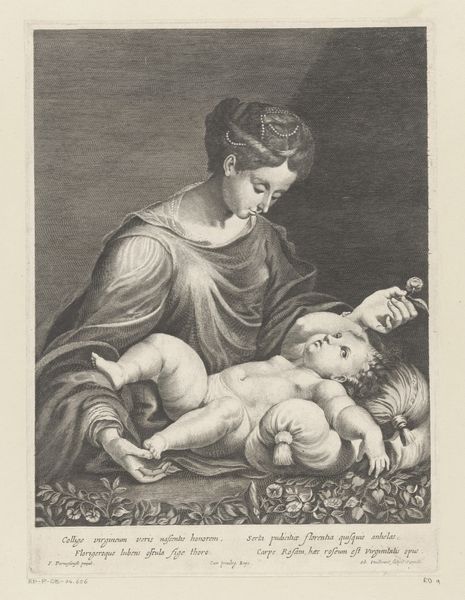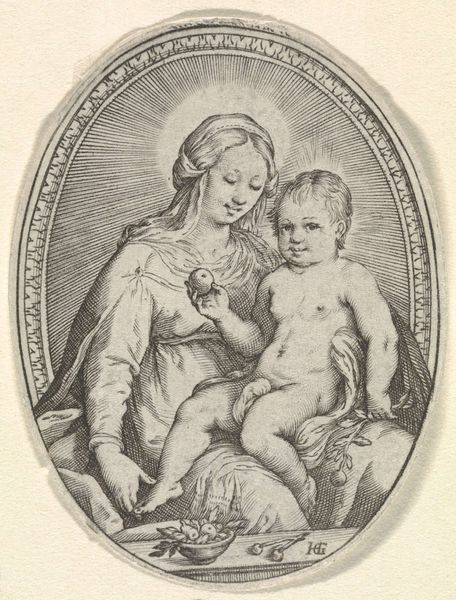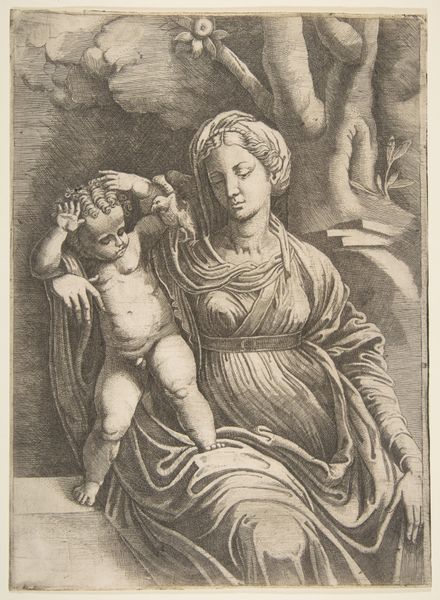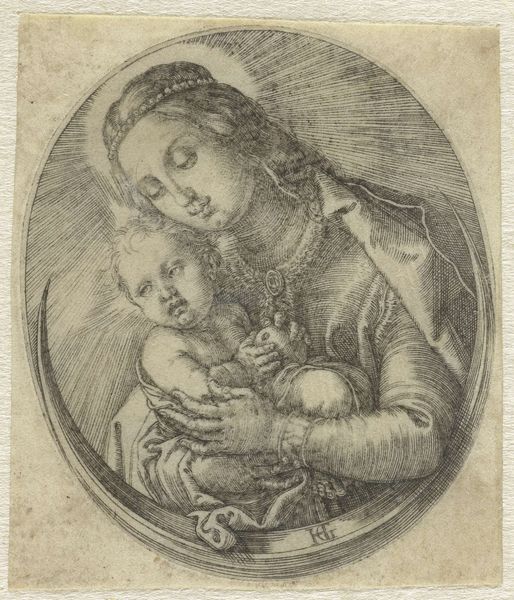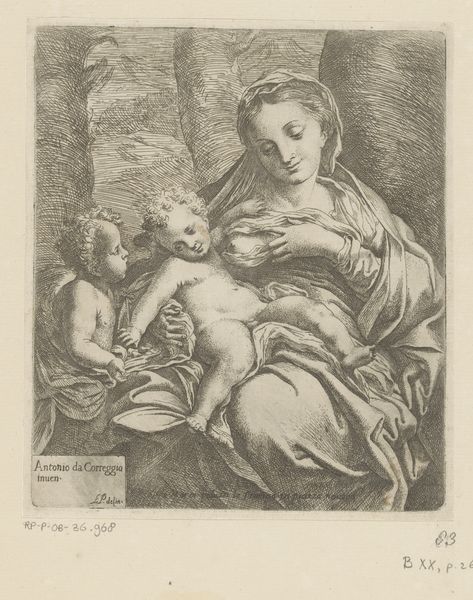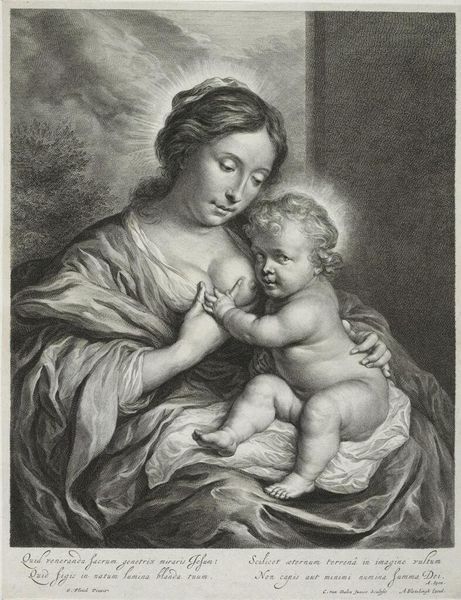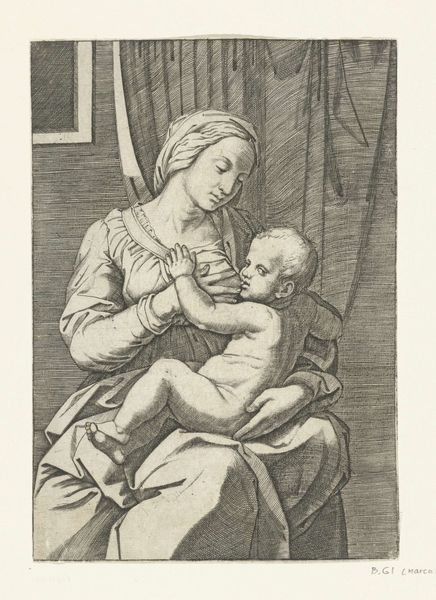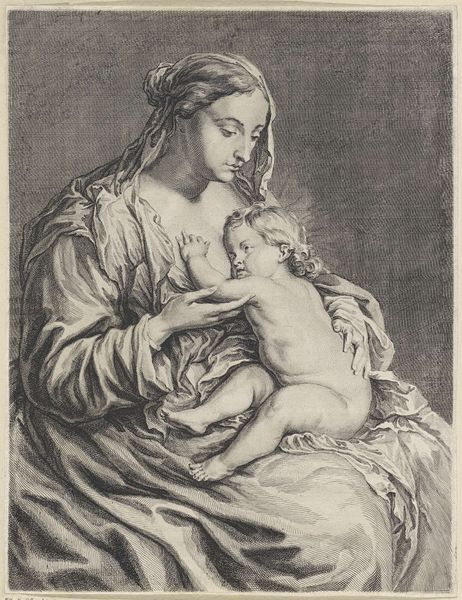
engraving
#
allegory
#
baroque
#
line
#
engraving
Dimensions: height 104 mm, width 79 mm
Copyright: Rijks Museum: Open Domain
Curator: This engraving, titled "Venus en Amor", was created by Gerard de Lairesse in 1668. It's currently housed in the Rijksmuseum collection. Editor: It's got a tender sweetness about it, doesn't it? The figures are so close, almost huddled together in that oval frame, and it is rendered entirely in incredibly fine lines. It is lovely to look at and immediately makes me think about the motherly love and protection, right? Curator: Absolutely. Lairesse positions Venus as both a maternal figure and the embodiment of love. Placing this in the broader context of the Dutch Golden Age, we see this reflects the prevailing societal values around family, domesticity, and, of course, the complex ways of perceiving love in marriage and society. This artwork contributes to understanding how female identity was constructed and idealized in that period, specifically in representing idealized motherhood. Editor: Interesting! It really is fascinating how artists then seemed to try and compress a whole thesis statement into what looks like, from today’s vantage, just an image. The engraving captures, also, a moment of quiet contemplation, it almost has an angelic feel about it, which contrasts with some more dramatic and bombastic artworks you sometimes see within Baroque aesthetics. Is that common for him? Curator: Well, Lairesse moved away from the Baroque style later on. In that sense, "Venus en Amor" does contain some key traits, such as the composition. But beyond style, Lairesse was also engaging in an intellectual exercise: how could art explore profound concepts—in this case love—while also serving the Dutch values I was just referencing, that related more to simple morals? Venus becomes a vehicle for exploring these tensions and values. Editor: Right, you almost have to read the image to get to the emotional layers that we have on the surface these days. And what about the technical choices? Engraving seems painstaking! Curator: It is, but it afforded precise control over line work. Lairesse employed it to great effect here, achieving subtle gradations of tone and texture, rendering both figures quite realistically. The lines allow for capturing of detail that adds to the emotional feel and is not readily accessible by other mediums, specifically those dominant back then. The composition’s emphasis on line, actually, anticipates the Neoclassical. Editor: This makes me look more deeply now. Knowing that Lairesse might’ve wanted to explore motherhood by representing it in what is, basically, love personified, helps think about both in relation. I have a sense this can inspire much deeper, gender-aware thoughts on how we perceive each now. Curator: Precisely! And to me, viewing "Venus en Amor" is ultimately an invitation to delve deeper, looking for social and historic reflections in such simple and accessible artistic statements.
Comments
No comments
Be the first to comment and join the conversation on the ultimate creative platform.
